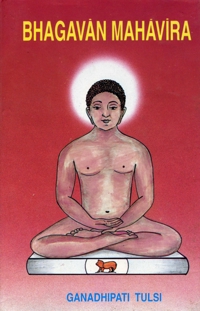 | Chapter 7 | The Relevance Of The Jaina Religion To Modern Problems |

hagavan Mahavira did not look at truth only from a single point of view. It does not mean that he did not look from one point of view, because it is necessary also to look from one particular point of view. But while doing so, it should be kept in mind that there are other points of view also.
- When Bhagavan Mahavira viewed the truth from the perspective of its result, he said,
- "The basic problem is that of violence."
- "The basic problem is that of violence."
- Looking at it from the point of view of its origin, he said,
- "The basic problem is that of the passions, kasayas.
Kasaya means a tainted consciousness and a tainted mind. Mind tainted with attachment is filled with the emotion of love whereas one tainted with aversion is filled with hatred.
Love, in its turn, produces avarice. Avaricious mind becomes deceitful, lustful and possessive.
Mind tainted with aversion takes pride in riches, caste, power, beauty etc.
Egotistic mind becomes prone to anger and hatred. It feeds the fire of quarrel.
Attachment is the mother of avarice and deceit, while aversion generates egotism and anger.
Anger, egotism, deceit and avarice give birth to all kinds of problems..
Bhagavan Mahavira realized this truth and practised the sadhana (practice) of freedom from passions through spiritual discipline.
It is said that non-violence is the supreme dharma and that it is Bhagavan Mahavira's great contribution to humanity.
This is a truth, but the truth behind this truth is that freedom from passions is the supreme dharma.
This, in fact, is a more basic contribution.
- Passions are the seed, violence is its fruit.
- Freedom from passions is the seed, non-violence is its fruit.
- Looked at from the point of view of the fruit, ahimsa may be said to be the great contribution of Bhagavan Mahavira.
- Looked at from the point of view of the seed, freedom from passions may be said to be his great contribution.
Thus both the statements are expressions of relative truth.
Bhagavan Mahavira did not take freedom from passions and ahimsa to be totally distinct from each other.
The range and depth of ahimsa are proportionate to those of freedom from passions.
The former is concomitant of the latter.
- The seed remains hidden, but we can see the fruit.
- Freedom from passions remains hidden, but we can see non-violence manifested in our conduct.
Bhagavan Mahavira looked at both freedom from passions and non-violence as parts of the same sequence, and therefore he propounded ahimsa in a wider perspective which is indeed his great contribution.
He said that non-violence is conducive to the good of all living beings. All are benefited by it. It is most propitious to the homo sapiens which leads a social life.
The more the man adopts violence to solve social problems, the more he deteriorates his own good.
 Acharya Tulsi
Acharya Tulsi

